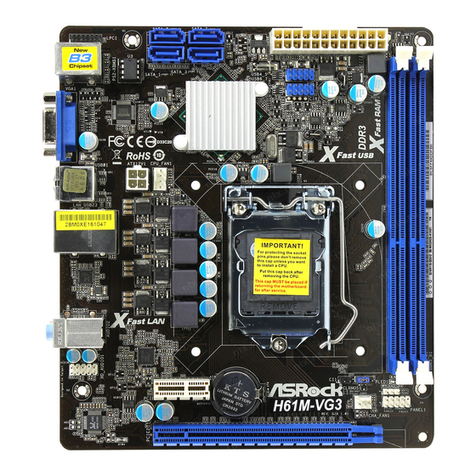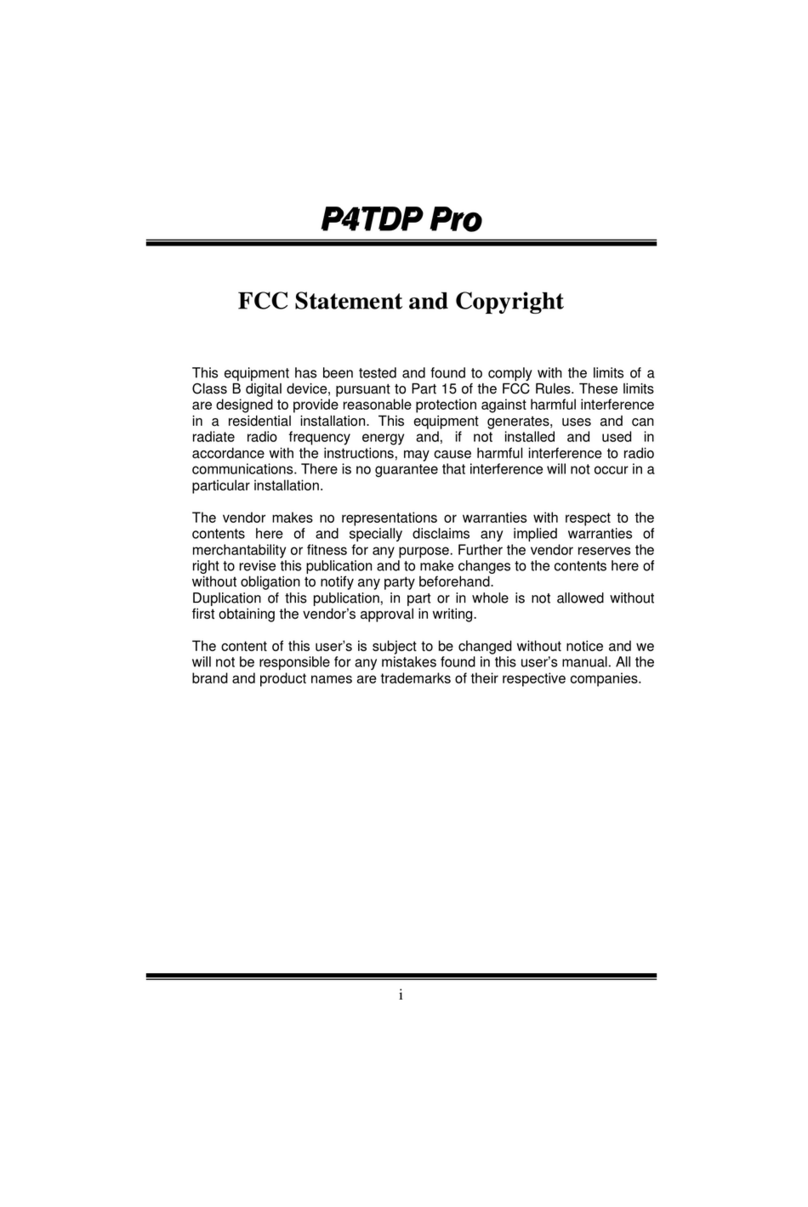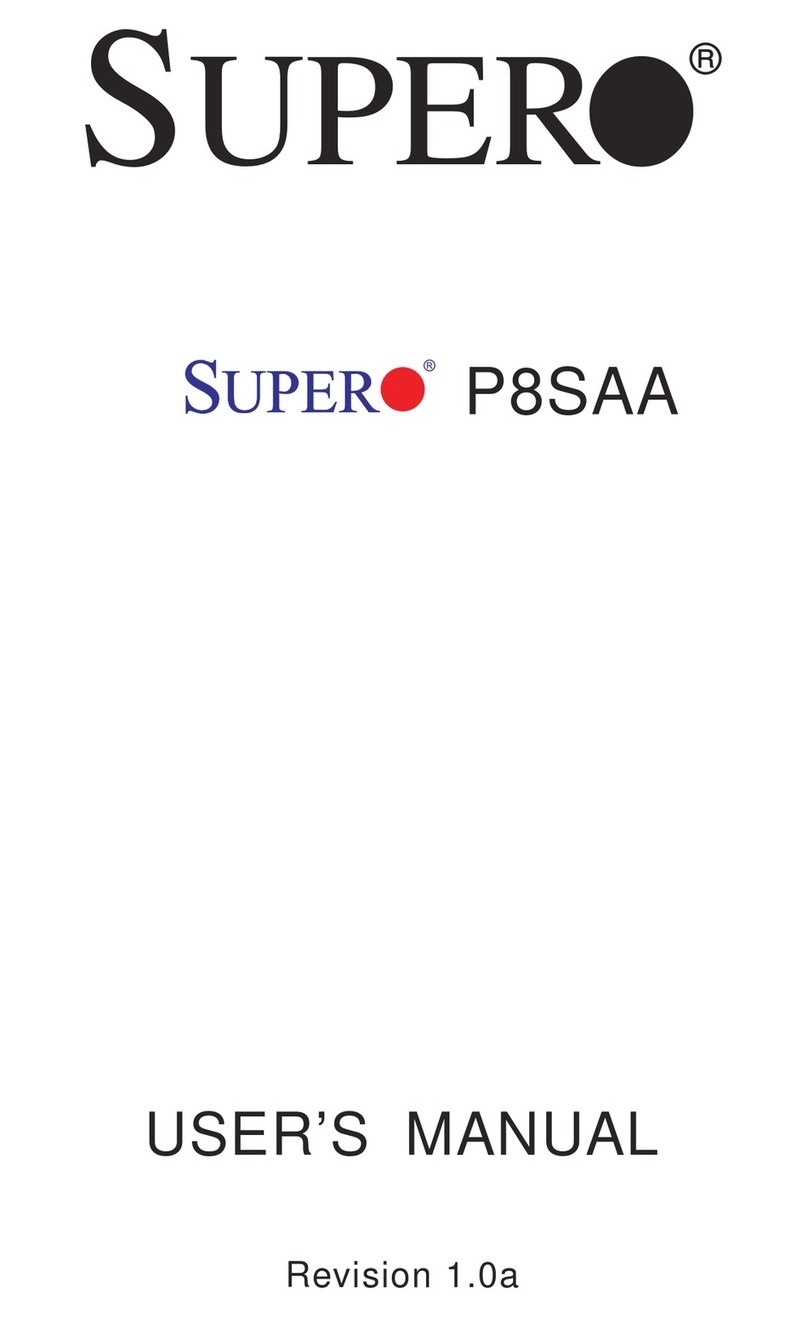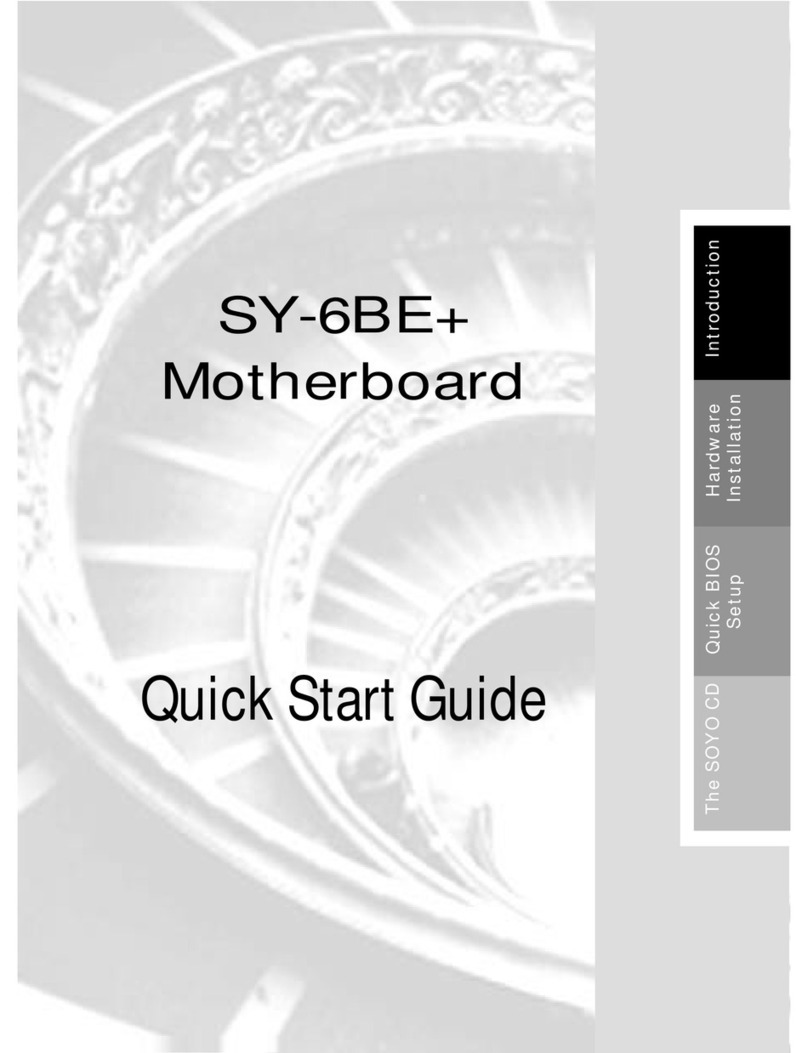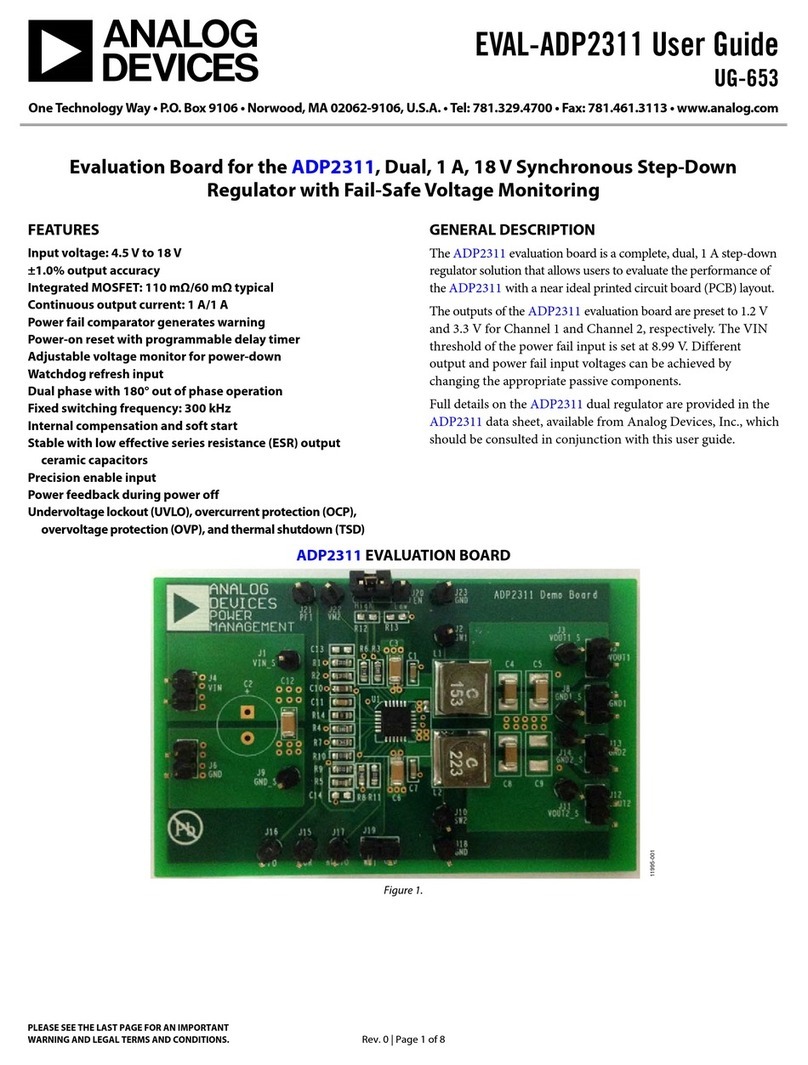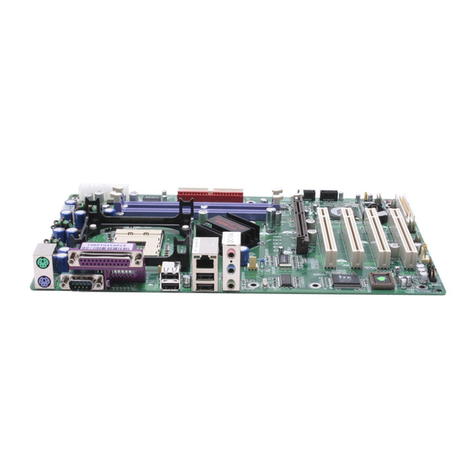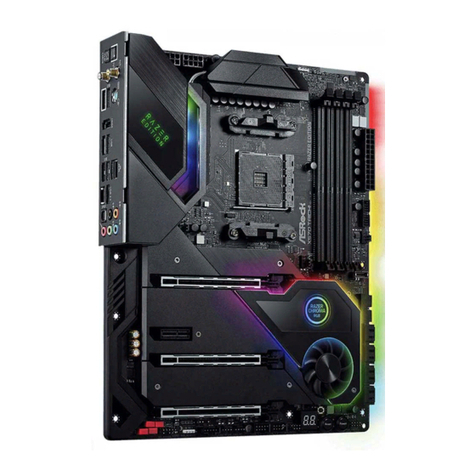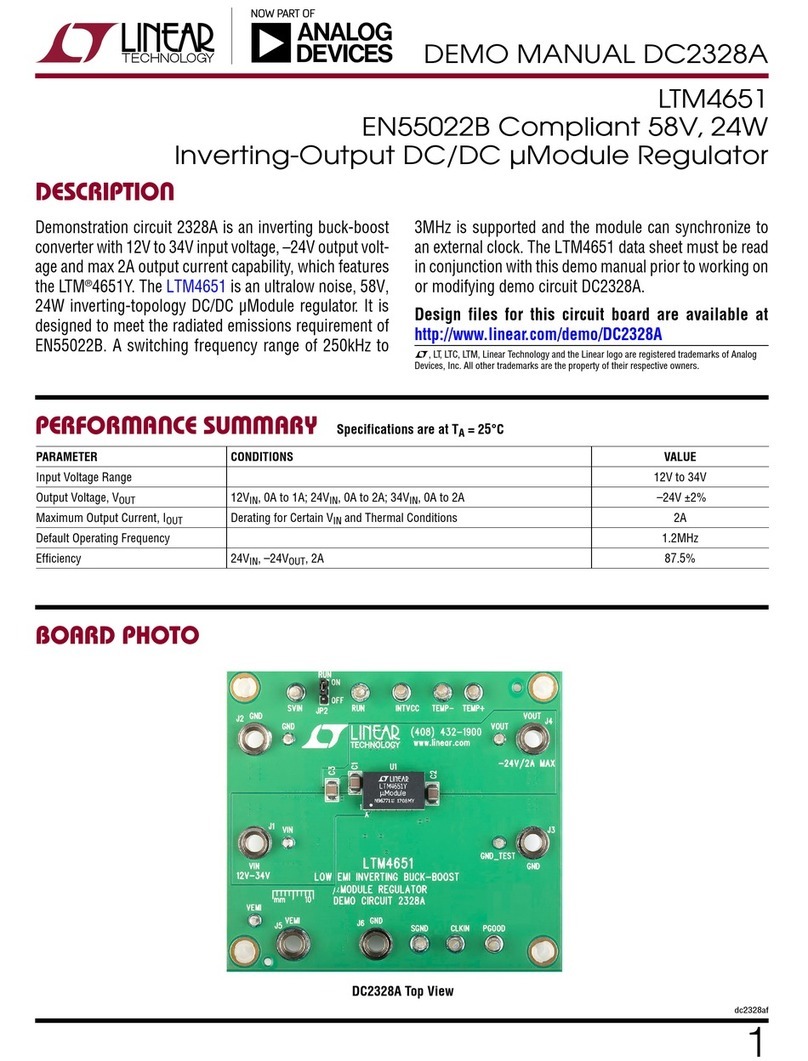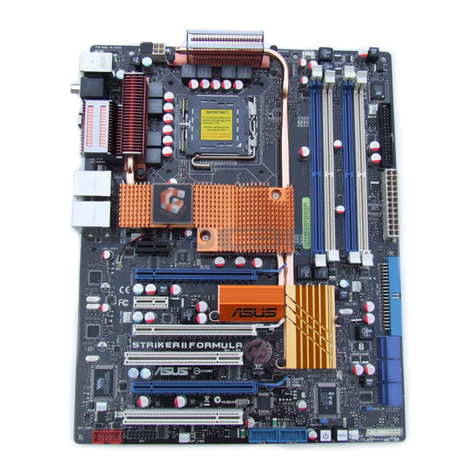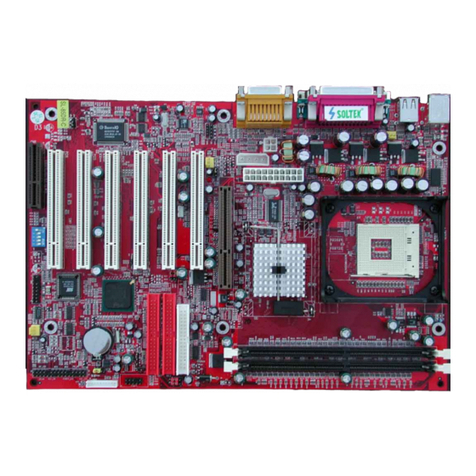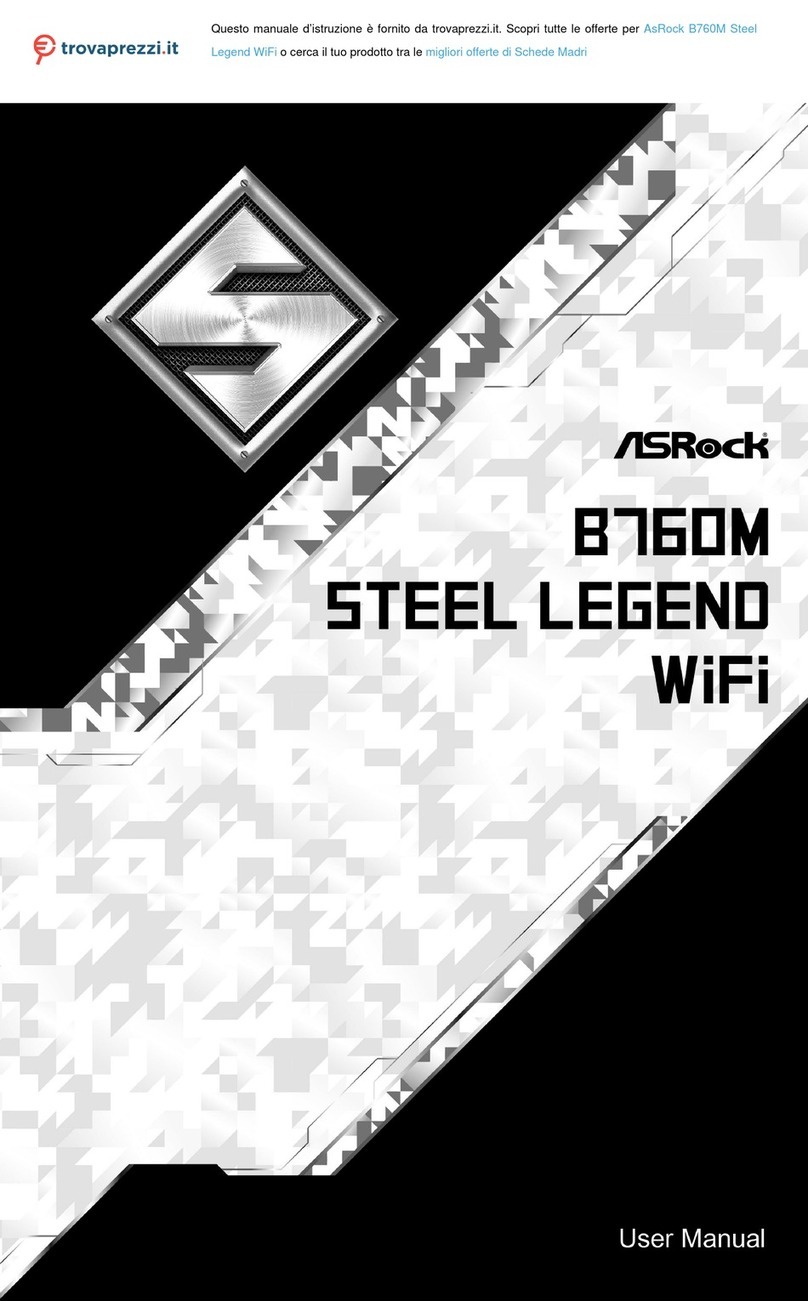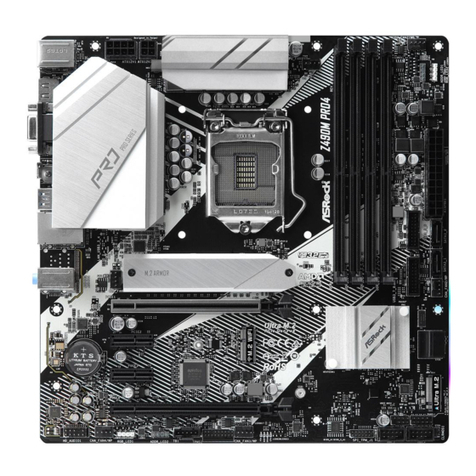Teknor Industrial Computers TEK-CPCI-1000 Product manual

TEK-CPCI-1000
CompactPCI Single Board Computer
TECHNICAL REFERENCE MANUAL
VERSION 2.1
May 1998
NOTE:
This manual is for reference purpose only.
Reproduction in whole or in part is authorized provided
TEKNOR INDUSTRIAL COMPUTERS INC. is cited as
the original source.
ref.: M1000_2.1

Read Me First 1
READ ME FIRST
EXERCISE CAUTION WHILE REPLACING LITHIUM BATTERY
WARNING
Danger of explosion if battery is incorrectly replaced.
Replace only with the same or equivalent type recommended by the manufacturer.
Dispose of used batteries according to the manufacturer's instructions.
ATTENTION
Il y a danger d’explosion s’il y a remplacement incorrect de la batterie.
Remplacer uniquement avec une batterie du même type ou d’un type équivalent
recommandé par le constructeur. Mettre au rebut les batteries usagées
conformément aux instructions du fabriquant.
ACHTUNG
Explosionsgefahr bei falschem Batteriewechsel.
Verwenden Sie nur die empfohlenen Batterietypen des Herstellers. Entsorgen Sie
die verbrauchten Batterien laut Gebrauchsanweisung des Herstellers.
ATENCION
Puede explotar si la pila no este bien reemplazada.
Solo reemplazca la pila con tipas equivalentes segun las instrucciones del
manifacturo. Vote las pilas usadas segun las instrucciones del manifacturo.

i
TABLE OF CONTENTS
PART 1
1. PRODUCT OVERVIEW..............................................................................1-1
2. ONBOARD SUBSYSTEMS........................................................................2-2
2.1 CONNECTOR LOCATION............................................................................2-2
2.2 ONBOARD CONNECTORS..........................................................................2-2
2.3 REAR-PANEL CONNECTORS.....................................................................2-2
2.4 FRONT PLATE CONNECTORS...................................................................2-2
3. COMPATIBILITY WITH TEKNOR PRODUCTS.........................................3-2
4. UNPACKING..............................................................................................4-2
5. SAFETY PRECAUTIONS ..........................................................................5-2
5.1 STATIC ELECTRICITY.................................................................................5-2
5.2 STORAGE ENVIRONMENT.........................................................................5-2
5.3 POWER SUPPLY.........................................................................................5-2

TEK-CPCI-1000 Technical Reference Manual
ii
PART 2
6. CUSTOMIZING THE BOARD ....................................................................6-2
6.1 PROCESSOR AND FAN ..............................................................................6-2
6.2 INSTALLING MEMORY................................................................................6-2
6.3 ENABLING MEMORY CACHE......................................................................6-2
6.4 CONFIGURING THE BOARD.......................................................................6-2
6.5 BIOS BOOT OPTIONS.................................................................................6-2
6.6 INSTALLING SUPERVISOR UTILITIES........................................................6-2
6.7 INSTALLING THE BOARD INTO A BAY.......................................................6-2
7. CONNECTING DEVICES...........................................................................7-2
7.1 SUPPLYING POWER ON THE TEK-CPCI-1000...........................................7-2
7.2 CONNECTOR LOCATION............................................................................7-2
7.3 SERIAL PORTS CONNECTORS (J4)...........................................................7-2
7.4 PS/2 MOUSE CONNECTOR (J8).................................................................7-2
7.5 KEYBOARD CONNECTOR (J9)...................................................................7-2
7.6 USB CONNECTOR (J7)...............................................................................7-2
7.7 PARALLEL PORT CONNECTOR (J3) ..........................................................7-2
7.8 10BASE-T CONNECTOR (J12)....................................................................7-2
7.9 MULTI-FUNCTION CONNECTOR (J2).........................................................7-2
7.10 MISCELLANEOUS DEVICES.......................................................................7-2
7.11 CONNECTING STORAGE DEVICES ...........................................................7-2
7.12 BATTERY BACKUP CIRCUIT.......................................................................7-2
8. INSTALLING VIDEO..................................................................................8-2
9. CONFIGURING DMA & IRQ......................................................................9-2
9.1 ALLOCATING DMA CHANNELS ..................................................................9-2
9.2 ALLOCATING IRQ LINES ............................................................................9-2
10. SETTING JUMPERS ...............................................................................10-2
10.1 JUMPER LOCATION..................................................................................10-2
10.2 CPU MODEL SELECTION; W1 AND W2....................................................10-2
10.3 JUMPERS W3-W7.....................................................................................10-2
10.4 JUMPERS W8-W13...................................................................................10-2
10.5 JUMPERS W14-W19.................................................................................10-2

Table of Contents
iii
PART 3
11. POWERING UP THE SYSTEM................................................................11-2
11.1 POWER UP ...............................................................................................11-2
11.2 TROUBLESHOOTING................................................................................11-2
12. SOFTWARE SETUP................................................................................12-2
12.1 AWARD SETUP PROGRAM......................................................................12-2
12.2 VIP-UP PROGRAM....................................................................................12-2
13. VFLASH SOFTWARE..............................................................................13-2
13.1 INTRODUCTION........................................................................................13-2
13.2 RUNNING VFLASH....................................................................................13-2
13.3 OUTPUT SELECTION................................................................................13-2
13.4 FILE SELECTION.......................................................................................13-2
13.5 FILE TRANSFER........................................................................................13-2
13.6 BATCH MODE ...........................................................................................13-2
14. FLASH FILE SYSTEM II .........................................................................14-2
14.1 INTRODUCTION........................................................................................14-2
14.2 SETTING UP CONFIG.SYS FOR FLASH FILE SYSTEM............................14-2
14.3 CREATING & FORMATTING A MS-FLASH PARTITION.............................14-2
15. UPDATING THE BIOS WITH UBIOS.......................................................15-2
15.1 INTRODUCTION........................................................................................15-2
15.2 UBIOS - INTERACTIVE MODE ..................................................................15-2
15.3 UBIOS - BATCH MODE..............................................................................15-2
16. VT100 MODE...........................................................................................16-2
16.1 VT100 REQUIREMENTS............................................................................16-2
16.2 VT100 SETUP & CONFIGURATION...........................................................16-2
16.3 RUNNING WITHOUT A TERMINAL ...........................................................16-2

v
APPENDICES
PART 4
A. BOARD SPECIFICATIONS .......................................................................... A-1
B. MEMORY & I/O MAPS .................................................................................B-1
B.1 MEMORY MAP DIAGRAM .............................................................................B-1
B.2 I/O MAPPING.................................................................................................B-1
BOARD DIAGRAMS ............................................................................................ C-1
C.1 MECHANICAL SPECIFICATIONS .................................................................C-1
C.2 ASSEMBLY - TOP DIAGRAM........................................................................C-1
C.3 ASSEMBLY - BOTTOM DIAGRAM ................................................................C-1
D. CONNECTOR PINOUTS..............................................................................D-1
D.1 MULTI-FUNCTION CONNECTOR - (J2)........................................................D-1
D.2 PARALLEL PORT CONNECTOR (J3) - STANDARD MODE.........................D-1
D.3 PARALLEL PORT CONNECTOR (J3) - EPP MODE .....................................D-1
D.4 PARALLEL PORT CONNECTOR - ECP MODE (J3).....................................D-1
D.5 COM1 - RS-232 (J4A) ....................................................................................D-1
D.6 COM2 - RS-232 (J4B) ....................................................................................D-1
D.7 COM2 - RS-422/RS-485 MODE (J4B)............................................................D-1
D.8 PS/2 MOUSE CONNECTOR (J6)...................................................................D-1
D.9 USB CONNECTOR (J7).................................................................................D-1
D.10 KEYBOARD CONNECTOR (J9).....................................................................D-1
D.11 FAN CONNECTOR (J10)...............................................................................D-1
D.12 ETHERNET 10/100 BASE-TX RJ-45 CONNECTOR (J12) ............................D-1
D.13 CPCI-BUS CONNECTOR ..............................................................................D-1
D.14 CPCI-I/O CONNECTOR.................................................................................D-1

vi
E. BIOS SETUP ERROR CODES..................................................................... E-1
E.1 POST BEEP...................................................................................................E-1
E.2 POST MESSAGES.........................................................................................E-1
E.3 ERROR MESSAGES......................................................................................E-1
E.4 POST CODES................................................................................................E-1
F. EMERGENCY PROCEDURE ........................................................................F-1
F.1 EMERGENCY PROCEDURE.........................................................................F-1
F.2 GENERATE AN EMERGENCY FLOPPY DISKETTE:....................................F-1
G. LIST OF APPROVED VENDORS.................................................................G-1
G.1 DRAM (U18,19,20,22)....................................................................................G-1
G.2 INTERFACE CONNECTORS.........................................................................G-1

PRODUCT DESCRIPTION
1. PRODUCT OVERVIEW
2. ONBOARD SUBSYSTEMS
3. COMPATIBILITY WITH TEKNOR PRODUCTS
4. UNPACKING
5. SAFETY PRECAUTIONS

1-1
1. PRODUCT OVERVIEW
The TEK-CPCI-1000 CompactPCI board represents the most advanced computer
architecture in the Single Board Computer world. The TEK-CPCI-1000 is based on
INTEL Pentium and AMD K6 processors, and is 100% electrically compatible with
INTEL’s PCI bus specifications.
The board is a 6U mechanical form factor (Eurocard format). It complies with the
CompactPCI design specification and takes advantages of the existent enclosures, card-
cages, and fixtures widely used in applications such as: communications, military, or
medical.
CompactPCI is a practical extension to the common PCI local bus. It is dedicated to a
robust industrial grade computer architecture and provides up to 132MB/sec of transfer
rate.
The TEK-CPCI-1000 board is fully compatible with existing application software and
operating systems available for desktop PCI: PC and MS-DOS, Windows3.1,
Windows95, WindowsNT, OS/2Warp, QNX, NOVELL, UnixWare.

TEK-CPCI-1000 Technical Reference Manual
1-2
CompactPCI Connectors
According to the PICMG 2.0 R2.1 CompactPCIspecification, CompactPCI connectors
are located at the rear of the board. They are defined as a 2mm pitch, shielded connectors
with a 5x47 array of pin for signals and 2 rows of 47 pins for shielding.
If required, a coding key may be installed to ensure a correct mating when connecting the
board to a CompactPCI backplane.
CompactPCI
connector is also known as 2mm Hard Metric connector.
Supported Processors
The TEK-CPCI-1000 supports: INTEL Pentium100, 120, 133, 150, 166 and
200MHz INTEL VRT Pentium100, 120, 133, and 150MHz
INTEL MMXPentium166, 200, and 233Mhz
AMD K6 166, 200, and 233MHz
MMXis for Multi Media eXtension, and VRT is for Voltage Reduced Technology.

Product Overview
1-3
Environment
The TEK-CPCI-1000 SBC is provided for rack-mounted systems which offer the highest
modularity for applications. The TEK-CPCI-1000 supports four CompactPCI connectors:
PCI P1, P2 - System connectors: output the 32-bit PCI signals and provides
arbitration, clock distribution, and reset functions for the peripheral slots of the
PCI segment. This segment will support up to seven CompactPCI sub-systems
(four bus master devices – with Ethernet disabled - and three slaves) such as:
Audio, Video, acquisition boards...
ISA P4, P5 - I/O connectors: provide both ISA and IDE signals to support
connections of hard drives, floppy disk drives, mouse and keyboard through the
backplane. USB communication signals are also provided through this I/O
segment. The signal assignation on these connectors is defined by TEKNOR.
When connecting the board to a backplane, ensure the backplane is capable of
supporting these signals and of making them available on separate local headers.
Such a backplane is provided by TEKNOR and is referred as TEK1101
CompactPCI Backplane.
A complete CompactPCI system (TEK-CPCI-1201) is also available from
TEKNOR.
Memory
System memory: the TEK-CPCI-1000 supports from 8MB to 512MB vertical
DRAM on four 72-pin SIMM sockets (FPM or EDO). Parity and
ECC are supported.
Internal cache: 8KB CPU-internal L1 cache with Pentium processors.
16KB with MMX processors.
32KB with K6 processors.
External cache: 256 or 512KB (L2) pipelined burst cache is implemented to
enhance the processor operations by eliminating wait states on
cache accesses.

TEK-CPCI-1000 Technical Reference Manual
1-4
TEK-CPCI-1000
CompactPCI
- Block Diagram
!" #$ %!
& "!
'(
)
*
%
%+(%,
(%
"
(
)
%! "
"
-.&
-.&
*+
'
%
*&
''
&
/
*
(
(
+%
+
*
*

2-1
2. ONBOARD SUBSYSTEMS
The TEK-CPCI-1000 system board is built around a single chip host-to-PCI bridge (430HX
from INTEL) which makes the PCI bus accessible through 2mm Hard Metric connectors
for up to 7 loads: 4 masters, including the onboard Ethernet, and 3 slaves.
The 430HX interfaces with the onboard processor host bus and a dedicated memory data
bus, and provides second level cache (L2) and DRAM control functions.
The DRAM controller supports up to 512MB of main memory. Both Fast Page Mode
(FPM) and Extended Data Output (EDO) memory technology are supported. The PCI-to-
DRAM interface transfer rate can go up to 112MB/sec for read and 121MB/sec for write.
The 430HX allows the processor to sustain the highest possible bandwidth to the graphics
frame buffer at all frequencies. To conform with “modular” oriented environment, the
board does not provide video function. Video will be supported using a CompactPCI
video module connected directly on the PCI bus (Order TEK-1002 from TEKNOR).
Ethernet subsystem is directly connected to the PCI bus. As PCI target, this configuration
allows all accesses to the internal registers to be automatically mapped into free memory
and I/O space upon initialization of the system. The Ethernet controller chip operates as a
master and a slave on the PCI bus. As a master, it interacts with the system memory to
access data for transmission or deposit received data. As a slave, some internal control
structures are accessed by the CPU for read and write operations.
The Ethernet chip provides 3Kbyte FIFO for receive and 3Kbyte FIFO for transmit which
prevent data overruns or underruns while waiting for access to the PCI bus. While the chip
provides independent Receive and Command units, the TEK-CPCI-1000 can process
communication commands and receive incoming frame simultaneously without real-time
CPU intervention.
The TEK-CPCI-1000 also provides a PCI-to-ISA bridge (PIIX3) along with other features
such as fast IDE interface, and USB.

TEK-CPCI-1000 Technical Reference Manual
2-2
2.1 CONNECTOR LOCATION
U
1
8
J
8
J
4
J
1
W3 W4 W5
W6 W8 W10
W7 W9
W11
J
2
B
1
J
3
W1
W2
J
7
J
9
J
1
0
S
1
U
1
9
U
2
0
U
2
2
J
5
J
1
1
J
8
W12
W13
J
1
3
W14
J
1
2
W19
W18
DS1
DS2
DS3
W15
W16
W17

Onboard Subsystems
2-3
2.2 ONBOARD CONNECTORS
Two connectors are used to drive various signals to the front plate:
Parallel Port (J3) - A flat cable is required to output the parallel signals from the
onboard connector to a standard 25-pin DSUB connector mounted on the front plate.
The Parallel Port is compliant with Standard, EPP and ECP modes.
Multi-function connector (J2) - Speaker, keyboard inhibit, download, reset, and
hard disk activity functions are available through the J2 connector.
Features are described as follows:
Speaker An 8ohm speaker can be directly connected. The power
stage is integrated onboard.
Keyboard inhibit Keyboard inhibit function is used to enable or disable the
keyboard.
Download Download function is used to transfer information from a
remote computer to the Flash disk through a serial link.
Reset A normally open push button can be used to reset the board.
Reset interface is open drain, thus external logic is not
required.
Hard disk activity LED can be used to indicate read and write operations on
the hard disk.
System Memory - The TEK-CPCI-1000 provides four 72-pin vertical SIMM sockets
to support from 8MB to 512MB of DRAM system memory. The memory is divided
into two banks referred as Bank 0 and Bank 1.
Each bank can be populated separately, but must be populated with the same memory
capacity.

TEK-CPCI-1000 Technical Reference Manual
2-4
2.3 REAR-PANEL CONNECTORS
Rear panel connectors consist of two 2mm Hard Metric connectors. The lower one is
dedicated to the PCI signals while the upper one is reserved to I/O signals.
2.3.1 I/O connector (J5/J8): CPCI P4/P5
Speaker signal - The speaker signal is also available on the
onboard multi-function connector (J2).
Enhanced IDE interface - Accelerates PIO data transfers and
provides an interface for both Primary/Secondary and
Master/Slave IDE devices (HD, CD-ROM).
ISA I/O - Fully ISA bus compatible interface.
USB - The onboard USB controller supports up to two USB ports.
One USB port is available through this connector, a second one is
available on the front plate.
Floppy Disk and Keyboard Signals.
PS/2 Mouse. When the mouse interrupt function is enabled, the
mouse interrupt is provided through IRQ12 to the CPU. A PS/2
mouse connector is also available on the front plate.
2.3.2 PCI connector (J11/J13):
Hard Metric Connector - 2mm pitch
PCI Bus – compliant with PICMG 2.0 specification
Bus Performance - up to 132MB/sec
Hot swap - capabilities for peripheral connections
Up to seven loads on the PCI segment

Onboard Subsystems
2-5
2.3.3 CompactPCI Connectors – Logical Identification
According to the PICMG 2.0 R2.1 specification, CompactPCI connectors are also logically
referred as:
P1 32-bit PCI signals: physically J13 on the board
P2 64-bit PCI signal extension: physically J11 on the board
I/O application signals are defined by TEKNOR through:
P4 IDE and I/O signals physically J8 on the board
P5 ISA signals physically J5 on the board

TEK-CPCI-1000 Technical Reference Manual
2-6
2.4 FRONT PLATE CONNECTORS
The front plate supports various connectors, functions and LEDs:
CompactPCI
21
COM
MOUSE
KEYBOARD
TEK-CPCI T1000
LPT1
100BASE-TX
10BASE-T
100BASE-TX
LINK
ACTIVE
USB
1
25
6
2
4
1
25
6
2
4
1
25
6
2
4
1
2
3
4
1
35
4
26
COM1/2 J4 - RS-232 standard support on COM1 and
COM2.
COM2 may also be set as RS-422 or RS-485.
Both are standard 9-pin DSUB male connectors.
Mouse J8 - PS/2 mouse connector.
USB J7 - Universal Serial Bus port with differential data
signals available on data pair. A second USB port
is available on the rear-panel I/O connector.
Keyboard J9 - Standard 5-pin DIN connector.
Reset S1 - Recessed reset button.
LPT1 Parallel port. Supports Standard mode, EPP and
ECP modes depending on the BIOS setup.
Connector is DSUB 25-pin standard.
Ethernet J12 - Operates directly on the PCI bus.
10Base-T and 100Base-T compatible on RJ-45
connector.
Auto detection and switching for 10Mbps or
100Mbps depending on the network speed.
Full and half-duplex capabilities at 10Mbps and
100Mbps.
Active, Link and 100Base-T LEDs.

3-1
3. COMPATIBILITY WITH TEKNOR PRODUCTS
The TEK-CPCI-1000 CPU Single Board Computer is a member of the TEKNOR
CompactPCI product family. The board is fully compliant with the PICMG 2.0 R2.1
CompactPCI specification for the PCI bus segment.
When building a basic environment around the TEK-CPCI-1000, the system may comprise
the following devices:
TEK-CPCI-1000 6U system board
TEK-CPCI-1002 3U VGA module
TEK-CPCI-1101 (or 1100) CompactPCI backplane
3U and 6U CompactPCI devices
6U form factor enclosure
A CompactPCI Development Platform is available from TEKNOR and is referred to as
TEK-CPCI-1002.

4-1
4. UNPACKING
Follow these recommendations while unpacking:
1. After opening the box, save it and the packing material for possible future shipment.
2. Remove the board from its antistatic wrapping and place it on a grounded surface.
3. Inspect the board for damage. If there is any damage, or items are missing, notify
TEKNOR immediately.
Contents
When unpacking you will find:
1. One TEK-CPCI-1000, Pentium/K6 Single Board Computer
2. One Technical Reference Manual.
3. A set of cables
Table of contents
Other Teknor Industrial Computers Motherboard manuals
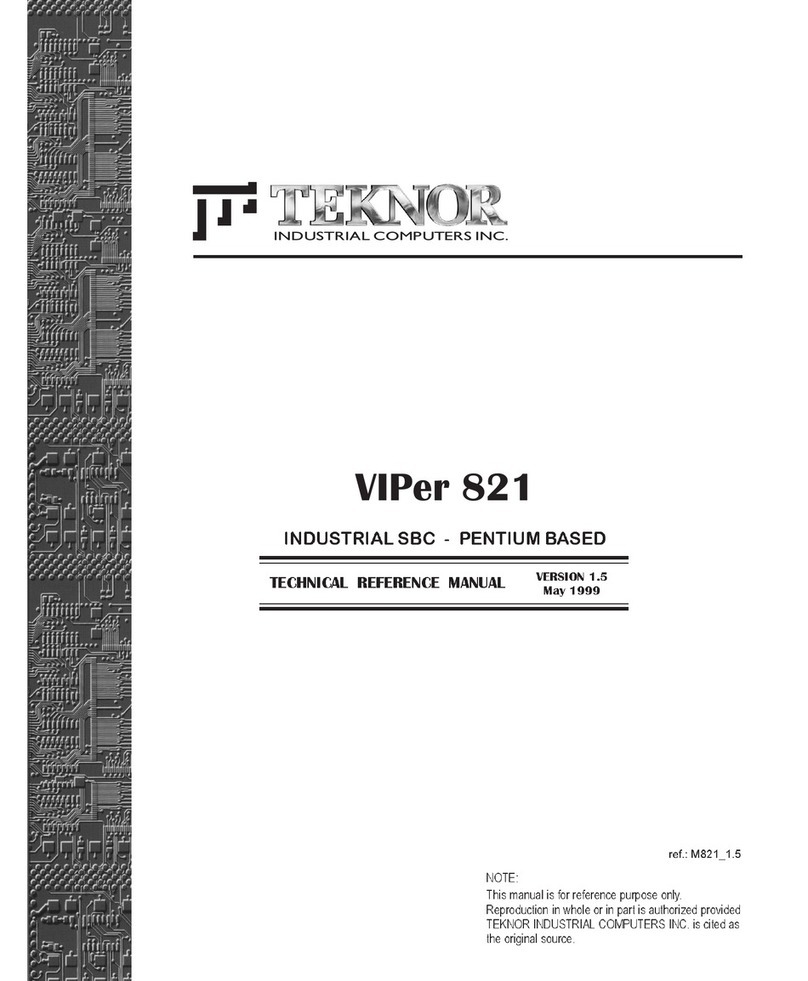
Teknor Industrial Computers
Teknor Industrial Computers VIPer 821 Product manual

Teknor Industrial Computers
Teknor Industrial Computers TEK-AT2 Quick user guide
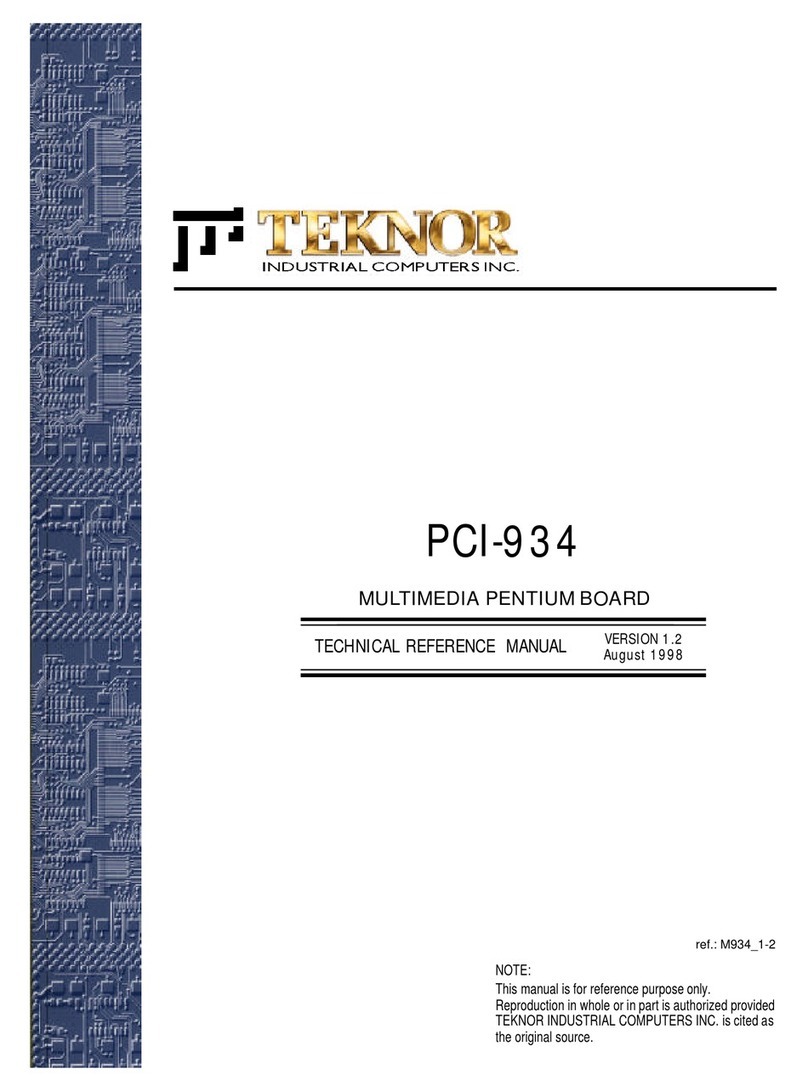
Teknor Industrial Computers
Teknor Industrial Computers PCI-934 Product manual
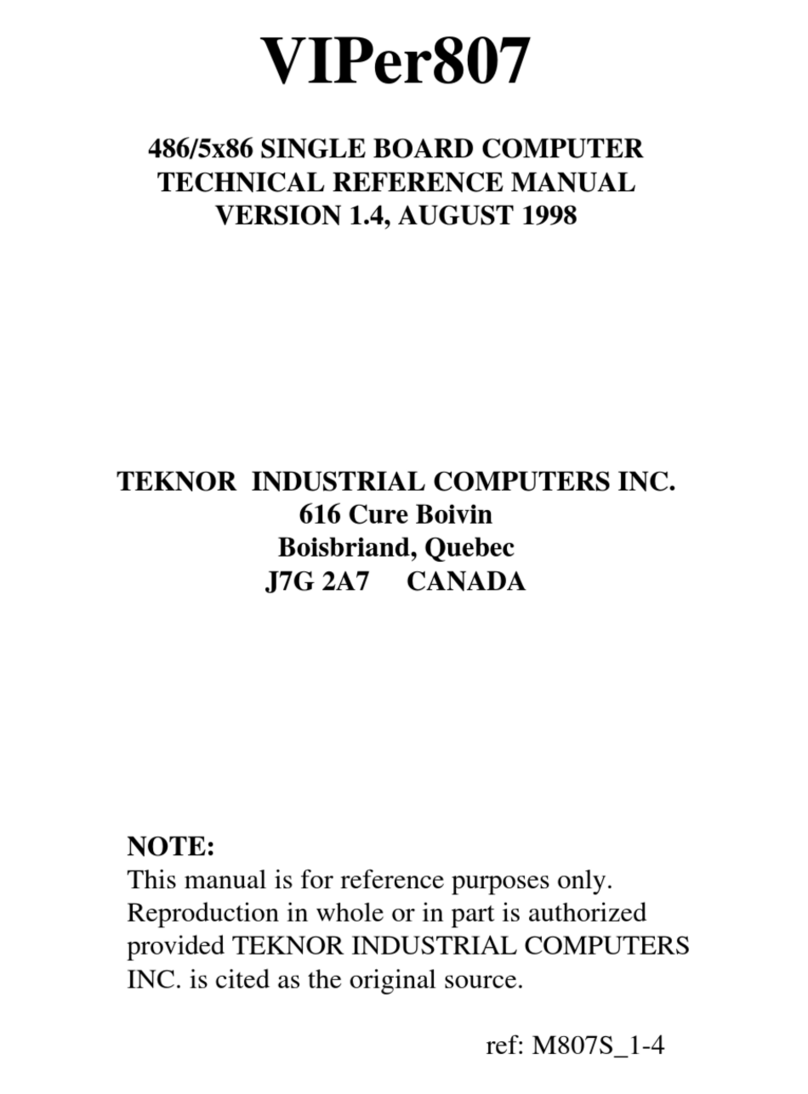
Teknor Industrial Computers
Teknor Industrial Computers VIPer807 Product manual
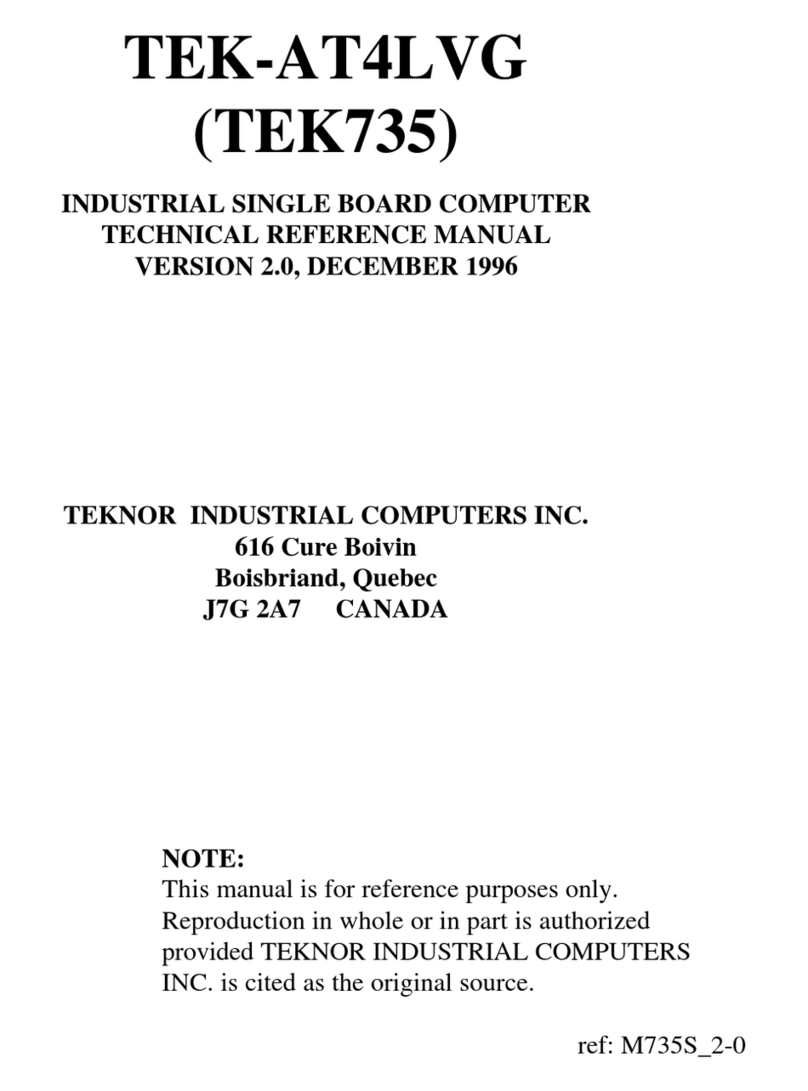
Teknor Industrial Computers
Teknor Industrial Computers TEK-AT4LVG Product manual
